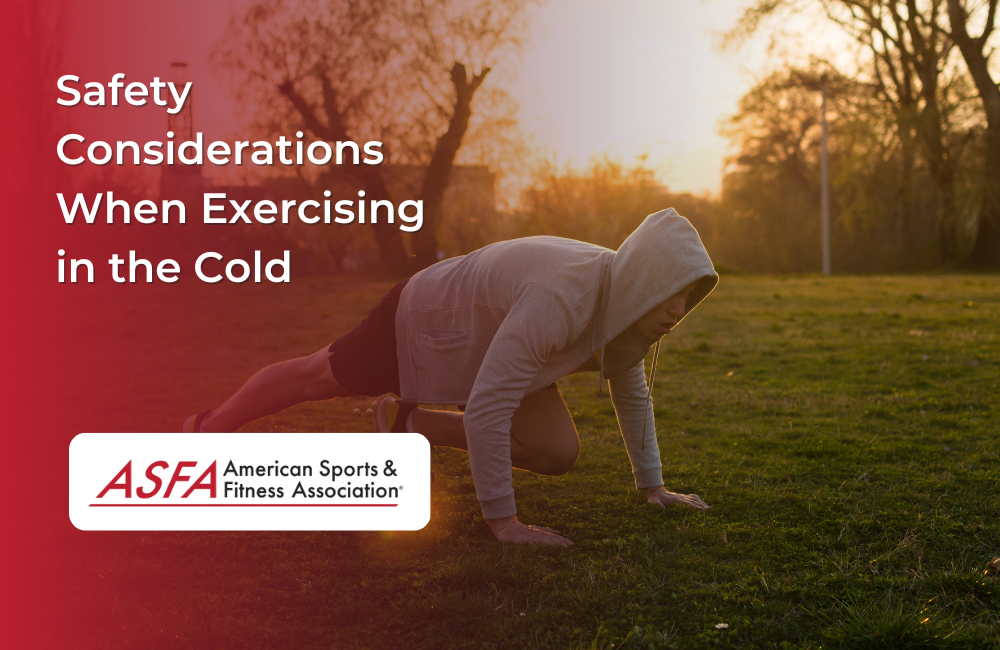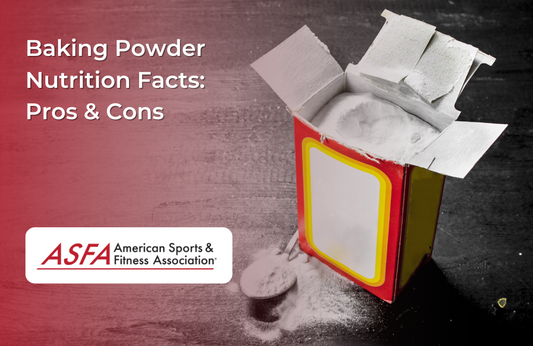Exercising in cold weather can be a refreshing way to stay active during the winter months, offering an invigorating alternative to indoor workouts. However, when the temperature drops, it’s crucial to take precautions to ensure you don’t over-exert yourself or fall victim to cold-related health issues. It is advised that individuals aged 65 or older, those with chronic health conditions (such as heart disease or diabetes), pregnant women, and people recovering from recent surgery should avoid strenuous outdoor exercise when the temperature falls below 40°F (4°C) due to the risk of hypothermia and abnormally low body temperature. However, with proper planning and preparation, outdoor winter workouts can be safe and enjoyable for everyone. Here are the key factors to keep in mind when exercising in cold weather.
Dress for the Weather: The Importance of Layering
Choosing the right clothing is critical for regulating body temperature while exercising in cold weather:
-
Layering is Key: Rather than wearing one bulky garment, opt for multiple thin layers. This strategy helps trap heat between layers while allowing flexibility to remove a layer if you start to overheat. Proper layering helps maintain core body temperature by providing insulation and protection against the cold. A typical layering system includes:
-
Base Layer: Choose moisture-wicking materials like synthetic fibers or merino wool that pull sweat away from your skin to prevent you from becoming chilled.
-
Middle Layer: This insulating layer traps body heat. Fleece or down works well here to maintain warmth.
-
Outer Layer: Opt for a waterproof or windproof jacket to protect against the elements, such as rain, snow, or wind.
-
Hats and Gloves are Essential: A significant amount of body heat escapes through the head, so wearing a hat that covers your ears is crucial. Gloves protect your hands from the cold and wind, preventing numbness and frostbite. Thermal gloves or mittens with a waterproof shell are ideal for staying dry and warm.
-
Protect Your Skin from UV Rays: Even on cold, cloudy days, UV rays can still be harmful, particularly if there is snow on the ground reflecting the sunlight. Apply a broad-spectrum sunscreen to exposed areas like your face and lips. A lip balm with SPF can also help protect against sunburn and chapping.
Avoid Over-Exertion: Know Your Limits
When exercising in cold weather, it’s essential to be mindful of your body’s signals to avoid pushing yourself too hard:
-
Stay Within Your Fitness Level: Cold temps can place extra strain on your cardiovascular system, as your heart works harder to pump blood to warm your extremities. If you’re not accustomed to exercising in these conditions, take it slow and gradually increase your intensity. Over-exertion in cold weather can lead to fatigue, increased risk of injury, or hypothermia.
-
Monitor for Hypothermia: Hypothermia can set in if your body temperature drops too low. Early symptoms include shivering, fatigue, and confusion. If you notice any of these signs, stop exercising, seek warmth, and change into dry clothing immediately.
-
Consider Indoor Workouts if Conditions Worsen: If the temperature is too cold or if there’s ice or snow on the ground, it may be safer to move your workout indoors. Icy conditions can increase the risk of slipping and falling, and extreme cold can make it difficult to exercise safely.
Stay Hydrated: Combat Cold-Weather Dehydration
Staying hydrated is just as important in cold weather as it is in the heat:
-
Drink Before, During, and After Exercise: Cold air is often dry, and combined with the body’s increased effort to stay warm, you may not realize how much water you’re losing through sweat. Cold weather can also cause constriction of blood vessels, making it harder for the heart to pump blood and increasing the importance of staying hydrated. Drinking water throughout your workout will help you avoid dehydration, which can sneak up on you in cold conditions.
-
Consider Electrolytes: In addition to water, consuming fruits and vegetables high in electrolytes (such as bananas and oranges) can help maintain hydration and energy. Electrolyte-rich drinks or sports drinks are also good options, but be mindful of their sugar content.
-
Beware of Diuretic Effects: Cold weather can increase the frequency of urination, which can further deplete your body’s water reserves. Be proactive about drinking fluids, even if you don’t feel thirsty.
Wear a Hat: Keep Your Head Warm
Wearing a hat is one of the simplest yet most effective ways to keep your body warm while exercising outdoors:
-
Insulation is Crucial: A warm hat that covers your ears helps prevent heat loss and protects your head from cold winds, especially in colder temperatures. Opt for hats made from wool or synthetic materials designed to insulate while wicking away moisture.
-
Avoid Hats with Brims: While hats with brims, like baseball caps, can keep snow or rain out of your eyes, they may prevent your head from staying warm. If you need protection from precipitation, consider a hooded jacket or headgear that offers both warmth and coverage.
Warm Up Before Exercising: Prepare Your Body for Cold-Weather Workouts
Warming up is especially important in cold weather to prevent injury and reduce the risk of cold-related illnesses. Colder weather requires additional preparation, such as dressing in layers, protecting extremities, and ensuring safe routes to stay safe during outdoor activities:
-
Increase Circulation: Start with 5-10 minutes of light cardio activities such as walking, slow jogging, or jumping jacks. This helps raise your heart rate gradually and increases blood flow to your muscles.
-
Stretch Your Muscles: Cold temperatures can cause muscles to tighten, making them more prone to injury. Incorporate dynamic stretching—such as leg swings, arm circles, and torso twists—before exercising to improve flexibility and prevent muscle strains.
-
Warm Up Your Extremities: Pay particular attention to warming up your hands, feet, and core, as these areas are more susceptible to the cold. Stretching your fingers and rotating your ankles can increase blood flow to these regions.
Be Prepared: Dress and Prepare for the Conditions
When you exercise outdoors in cold weather, knowing the temperature and adjusting your clothing accordingly can make all the difference. Being aware of potential risks like frostbite and hypothermia is crucial for a safe workout:
-
Check the Weather Before You Start: Always check the temperature and wind conditions before heading out. Pay attention to the wind chill factor, as this can make it feel much colder than the actual air temperature.
-
Wear Gloves and Other Protective Gear: Cold fingers and toes are vulnerable to frostbite, so always wear insulated gloves and warm socks. Consider using hand warmers if you’ll be out for an extended period.
-
Protect Your Skin from Frostbite: Keep all exposed skin covered, especially on very cold days. A face mask or scarf can help protect your nose and cheeks from the cold wind.
Adjust Your Workout to the Cold
Cold weather can place additional stress on your body, so it’s important to adjust your workout accordingly:
-
Lower the Intensity: Exercising in colder temperatures can make it more difficult to breathe, particularly if you have asthma or other respiratory conditions. Reducing the intensity of your workout can help you avoid over-exerting yourself and becoming short of breath.
-
Focus on Form and Control: In cold weather, your muscles may not respond as quickly as they do in warmer conditions. Slow down your movements and focus on proper form to avoid injury.
Emergency Preparedness: Plan for Unexpected Situations
Exercising in cold weather requires being prepared for unexpected situations. It’s essential to have a plan in place in case of an emergency. Here are some tips to help you prepare:
-
Carry a Fully Charged Phone: Always have a fully charged phone with you when exercising outdoors in cold weather. This ensures you can call for help if needed.
-
Inform Someone of Your Plans: Let someone know your exercise route and expected return time. This way, if something goes wrong, they can alert authorities.
-
Pack a Small First-Aid Kit: Carry essentials like bandages, antiseptic wipes, and pain relievers. These can be crucial if you sustain a minor injury.
-
Know the Symptoms of Hypothermia and Frostbite: Be aware of the signs of hypothermia (shivering, fatigue, confusion) and frostbite (numbness, white or grayish-yellow skin). Understanding these symptoms can help you act quickly if they occur.
-
Keep Emergency Contacts Handy: Have a list of emergency contact numbers, including your healthcare provider and local emergency services.
-
Carry an Emergency Kit: Consider carrying a small emergency kit with items like a blanket, flashlight, and snacks. These can be lifesavers if you get stranded.
In case of an emergency, stay calm and follow these steps:
-
Seek Medical Attention: If you or someone with you is experiencing symptoms of hypothermia or frostbite, seek medical attention immediately.
-
Find Shelter: If you are lost or stranded, try to find shelter and start a fire to stay warm.
-
Avoid Extreme Cold: If you are experiencing extreme cold or wind chill, seek shelter and warmth as soon as possible.
Cooling Down: Safely Transition After Cold-Weather Exercise
After exercising in cold weather, it’s essential to cool down safely to prevent sudden changes in body temperature. Here are some tips to help you cool down:
-
Gradually Slow Down: Gradually slow down your exercise intensity over a period of 5-10 minutes. This allows your body temperature to drop slowly and safely.
-
Remove Excess Clothing: Remove excess clothing to prevent overheating and promote cooling. This helps your body adjust to the lower temperature gradually.
-
Stretch Your Muscles: Stretch your muscles to help improve blood flow and reduce muscle soreness. This is especially important in cold weather when muscles can be tighter.
-
Drink Warm Fluids: Drink warm fluids, such as tea or hot chocolate, to help raise your body temperature. This can be a comforting way to warm up after a cold-weather workout.
-
Avoid Sudden Temperature Changes: Avoid sudden changes in temperature, such as taking a hot shower or bath immediately after exercising. This can cause your body temperature to drop rapidly, which can be dangerous.
By following these tips, you can safely transition after cold-weather exercise and reduce the risk of injury or illness. Remember to always prioritize your safety and health when exercising in cold weather.
Mental and Physical Benefits of Cold-Weather Exercise
Despite the challenges, exercising in cold weather offers numerous physical and mental health benefits:
-
Improved Mood: Cold-weather exercise can boost your mood by releasing endorphins, which help reduce stress and improve overall well-being. This can be especially helpful during the winter months when many people experience seasonal depression.
-
Burn More Calories: Your body works harder to maintain its core temperature in the cold, which can result in burning more calories than you would in warmer conditions. Additionally, colder temperatures can enhance endurance and efficiency by reducing the workload on the heart.
-
Boost Your Immune System: Regular exercise helps strengthen your immune system, which is especially important during cold and flu season. Exercising outdoors in the winter can keep your immune defenses strong while keeping your body fit.
Conclusion: Stay Safe and Enjoy Cold-Weather Workouts
Exercising in cold weather can be a rewarding and enjoyable way to stay active, but it’s essential to take the necessary precautions to stay safe. In colder weather, dress in layers, protect your extremities, stay hydrated, and listen to your body to avoid over-exertion or injury. Warming up and staying informed about weather conditions will help ensure that you have a successful and invigorating workout, no matter how cold it gets outside. By taking these precautions, you can embrace the challenges of winter workouts while reaping the benefits of outdoor exercise year-round.





